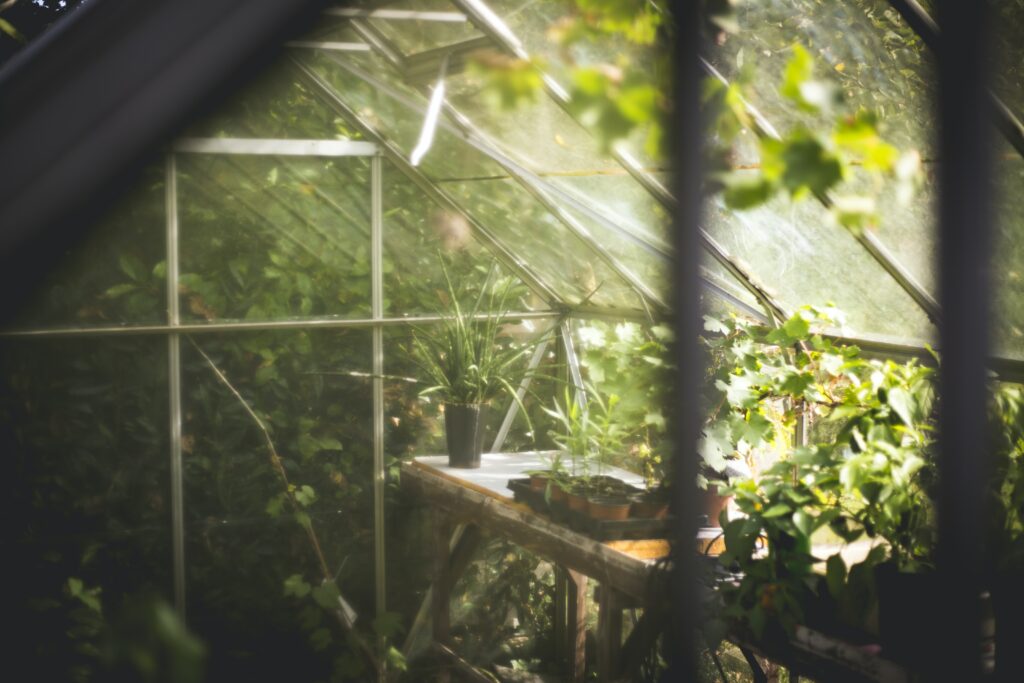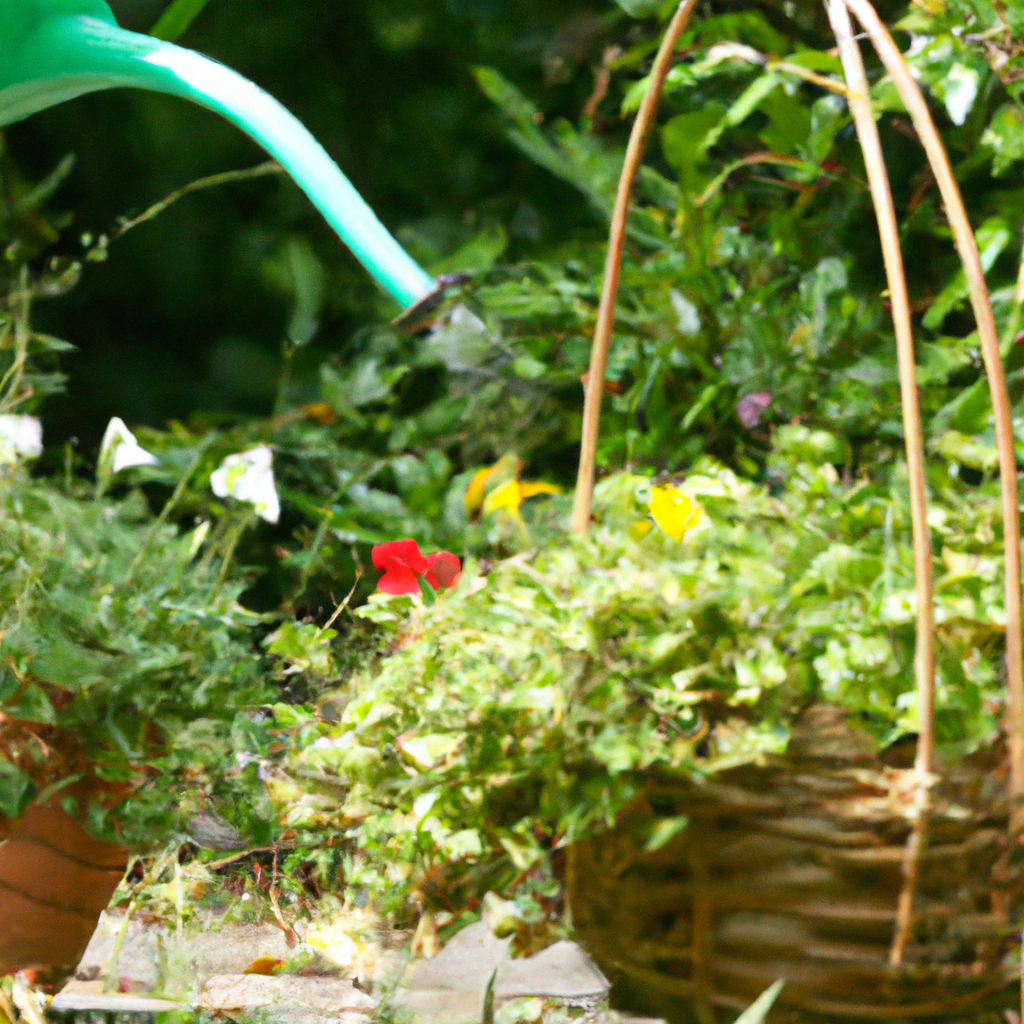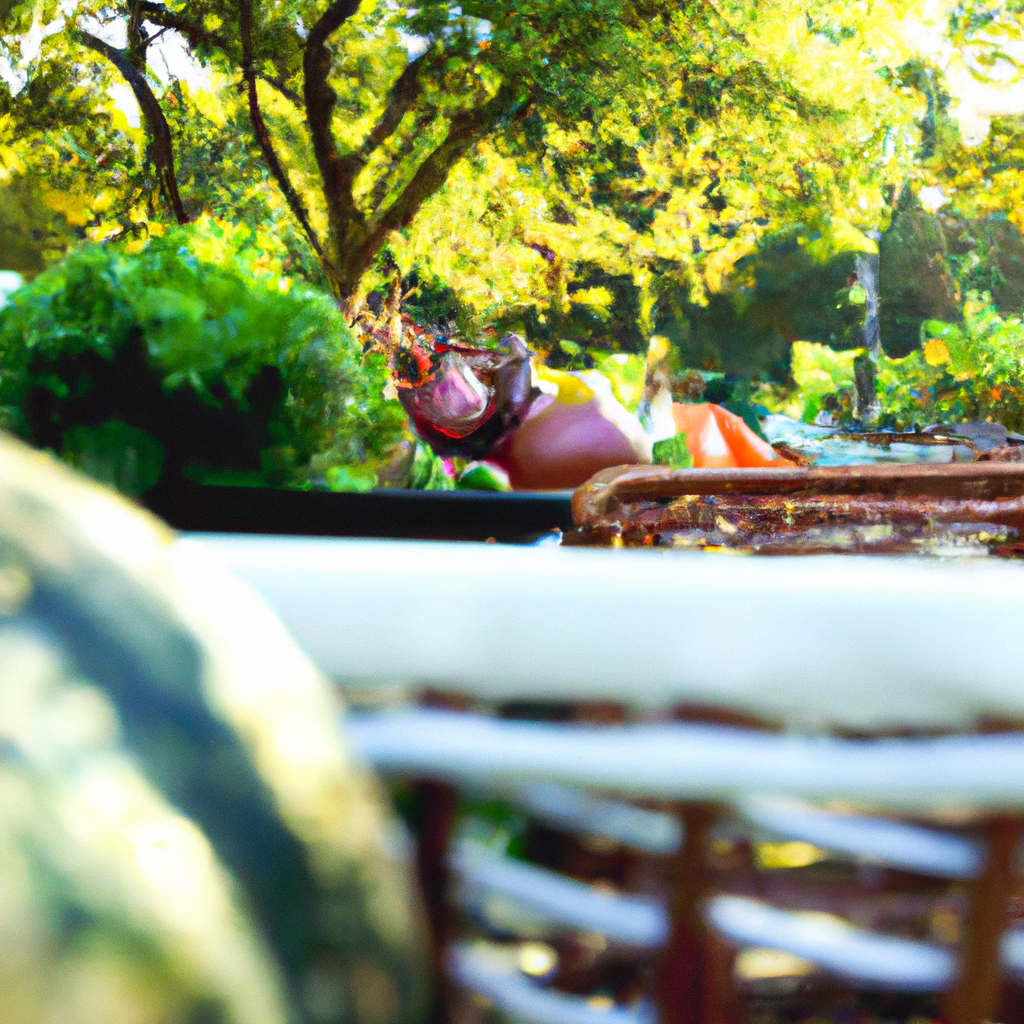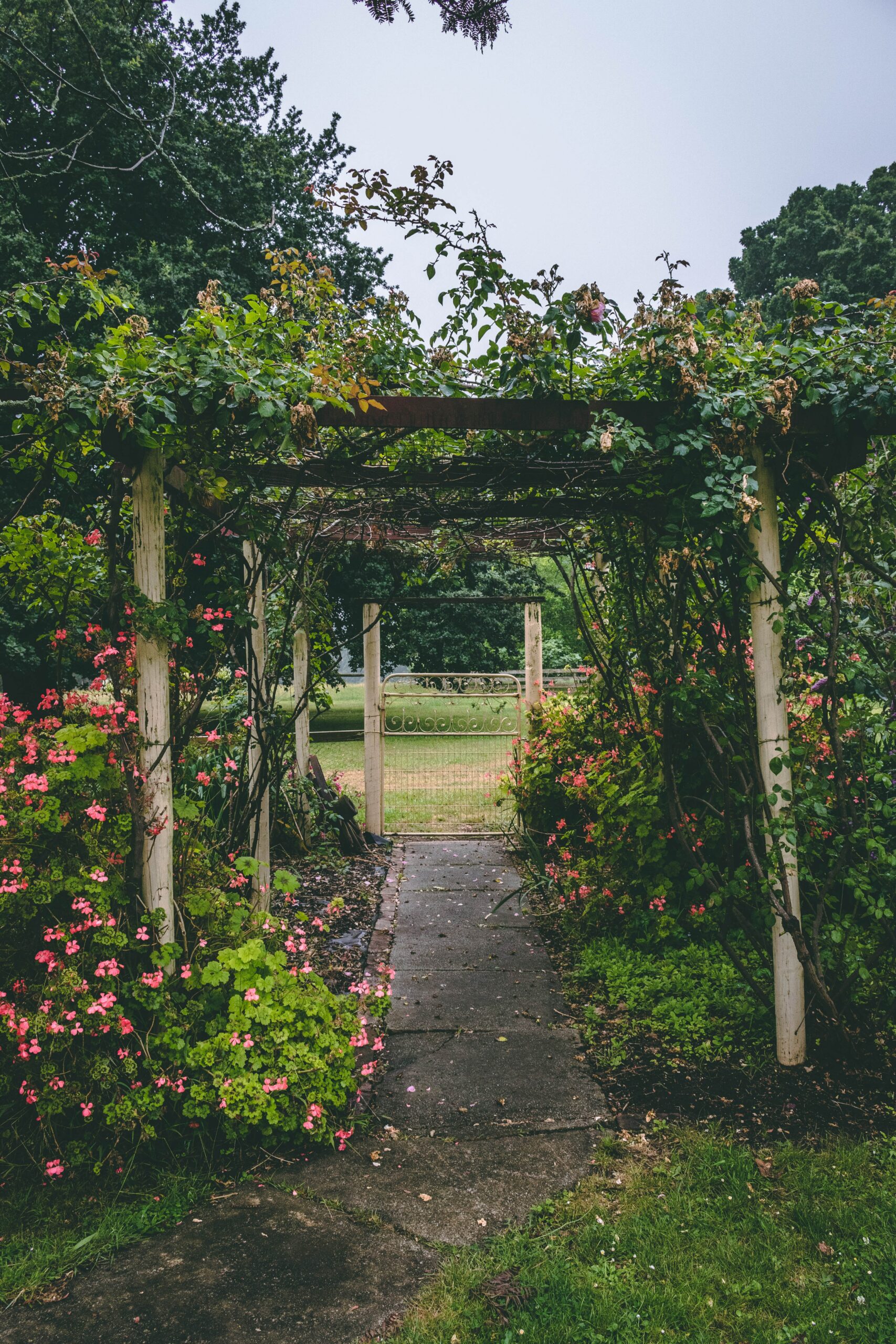If you’ve ever dreamed of turning your green thumb into a successful business venture, then look no further. “The Essential Guide to Starting a Profitable Commercial Garden” is your ultimate resource for transforming your passion for gardening into a lucrative enterprise. Packed with practical tips, expert advice, and insider secrets, this guide will equip you with everything you need to know to start and maintain a thriving commercial garden. Whether you’re a seasoned gardener or a complete beginner, this comprehensive guide is your key to cultivating not only a profitable garden but also a prosperous future.
Choosing the Right Location
When it comes to starting a commercial garden, the first step is choosing the right location. The success of your garden will heavily depend on factors such as the local climate and weather conditions, available space, and access to sunlight and water sources.
Consider local climate and weather conditions
Before selecting a location for your garden, it is essential to consider the local climate and weather conditions. Different crops have different temperature and moisture requirements, so understanding the climate of your area will help you determine which crops will thrive and which ones may struggle. Take into account factors such as average rainfall, temperature fluctuations, and frost dates to ensure that your garden can withstand and adapt to the local weather patterns.
Evaluate available space and size requirements
Another important consideration when choosing a location is the available space and size requirements for your garden. Assess the amount of land or area you have, and determine if it is sufficient to meet your needs. Consider factors such as the number of crops you plan to grow, the amount of yield you expect, and any expansion plans you might have in the future. Having enough space to accommodate all your crops and equipment is crucial for the success and profitability of your commercial garden.
Assess access to sunlight and water sources
Sunlight and water are two vital resources for any garden. Before finalizing your garden location, assess the amount of sunlight your chosen spot receives throughout the day. Most crops require at least six hours of direct sunlight, so make sure your location provides adequate light for the plants to grow and thrive. Additionally, consider the proximity and accessibility of water sources. A reliable and easily accessible water source is essential for irrigation, especially during dry spells. Make sure your location has access to a water supply, whether it’s a well, municipal water, or a nearby pond or river.
Determining the Garden Layout and Design
Once you have chosen the right location, the next step is to determine the layout and design of your commercial garden. The layout and design of your garden will not only impact its visual appeal but also its functionality and ease of maintenance.
Decide on the type of garden beds or containers
There are various types of garden beds and containers to choose from, depending on your preferences and the specific needs of your crops. Raised beds, for example, are a popular choice as they provide better drainage and control over soil quality. Container gardening is another option, which allows for flexibility and mobility if you have limited space or need to move your garden around. Consider the pros and cons of each option and choose the one that best suits your needs and the type of crops you plan to grow.
Plan for paths and walkways
In addition to garden beds and containers, it’s important to plan for paths and walkways within your garden. Properly designed paths and walkways will not only make your garden more visually appealing but also ensure easy access for maintenance tasks. Consider the width of paths to accommodate necessary equipment, such as wheelbarrows or carts. Additionally, think about the materials you’ll use for paths, such as gravel, wood chips, or pavers, and choose materials that are durable, non-slip, and suitable for the climate in your area.
Consider accessibility and convenience for maintenance
The layout and design of your garden should also prioritize accessibility and convenience for maintenance. Think about how you’ll navigate and maintain your garden efficiently. Consider factors such as spacing between garden beds, access to irrigation systems, and the placement of tools and equipment. A well-designed garden that takes into account ease of maintenance will save you time and effort in the long run, allowing you to focus on the profitability of your commercial garden.

Selecting Suitable Crops and Plants
Choosing the right crops and plants for your commercial garden is crucial for its profitability and success. Consider factors such as market demand, crop rotation, companion planting, and the ability of plants to thrive in your local climate.
Research market demand for specific crops
Before deciding which crops to grow, it’s important to research and assess the market demand for specific crops in your area. Look for crops that are in high demand and have the potential to generate a profit. Consider factors such as local restaurants, farmer’s markets, and grocery stores that may be interested in purchasing your produce. Additionally, take into account any specific niche markets or unique crops that may be in demand in your area. By choosing crops with high market demand, you increase the chances of profitability for your commercial garden.
Consider crop rotation and companion planting
Crop rotation and companion planting are two important practices to consider when selecting crops and plants. Crop rotation involves planting different crops in different areas of your garden each year to prevent the buildup of pests and diseases that target specific plants. By rotating your crops, you can maintain a healthier garden and reduce the need for chemical interventions. Companion planting, on the other hand, involves planting certain crops together that have mutual benefits. For example, planting marigolds near tomatoes can help repel pests. Both crop rotation and companion planting are sustainable and natural methods to improve the health and productivity of your garden.
Choose plants that thrive in the local climate
One of the key factors in selecting suitable crops and plants is to choose varieties that thrive in the local climate. Different plants have different temperature, moisture, and sunlight requirements. Research and identify plants that are well-adapted to your area’s climate and have a track record of success. Look for varieties that are known for their disease resistance, high yield, and flavor. By choosing plants that are well-suited to your local conditions, you increase the chances of a successful and profitable commercial garden.
Preparing the Soil
Preparing the soil is a critical step in establishing a healthy and productive commercial garden. Proper soil preparation ensures that your plants have access to the nutrients they need for optimal growth and performance.
Conduct a soil test for nutrient analysis
Before preparing the soil, it’s important to conduct a soil test to analyze its nutrient composition. A soil test will provide valuable information about the pH levels, nutrient deficiencies, and other factors that may affect plant growth. You can obtain a soil test kit from your local agricultural extension office or hire a professional soil testing service. Based on the results of the soil test, you can make informed decisions about the type and amount of amendments to add to your soil.
Amend the soil with organic matter and fertilizers
Once you have the results of your soil test, you can amend the soil accordingly. Adding organic matter, such as compost or well-rotted manure, is an excellent way to improve soil fertility and structure. Organic matter helps improve soil moisture retention, drainage, and nutrient availability. Additionally, you may need to add fertilizers to provide specific nutrients that are lacking in your soil. Choose organic or slow-release fertilizers to minimize the risk of nutrient imbalances or environmental damage.
Ensure proper pH levels for optimal plant growth
The pH level of your soil is crucial for optimal plant growth. Most crops prefer a slightly acidic to neutral pH, typically between 6.0 and 7.0. However, the pH requirement can vary depending on the type of plant. To ensure proper pH levels, you may need to adjust the soil using lime to raise the pH or sulfur to lower it. Regularly monitoring and maintaining the pH level of your soil will ensure that your plants can efficiently absorb nutrients and thrive in your commercial garden.

Starting Seeds or Transplanting Seedlings
Once you have prepared the soil, it’s time to start seeds or transplant seedlings into your commercial garden. Starting seeds indoors or purchasing healthy seedlings will give your plants a head start and improve their chances of successful establishment.
Gather necessary equipment and supplies
Before starting seeds or transplanting seedlings, make sure you have all the necessary equipment and supplies. You will need containers or trays for starting seeds, a suitable growing medium, labels for identification, and proper lighting or heating equipment. If you choose to transplant seedlings, make sure you have enough garden space prepared with proper soil amendments and irrigation systems in place. Having everything ready beforehand will streamline the process and ensure a smooth transition for your plants.
Follow proper techniques for starting seeds indoors
If you choose to start seeds indoors, there are specific techniques you should follow to ensure success. Start by filling clean containers or trays with a sterile growing mix. Sow the seeds at the appropriate depth and provide consistent moisture and warmth. Place the containers in a well-lit area or use supplemental lighting. As the seedlings grow, make sure to adequately water and fertilize them. Proper care and attention during the seed starting process will result in healthy and vigorous plants ready for transplanting.
Transplant seedlings into the garden beds
When the seedlings are strong and have developed several true leaves, they are ready to be transplanted into the garden beds. Make sure the soil in the garden beds is moist and has been amended with organic matter and fertilizers as needed. Dig a hole slightly larger than the seedling root ball and gently place the seedling into the hole, covering the roots with soil. Firmly press the soil around the base of the seedling to ensure good contact. Water the newly transplanted seedlings immediately and provide regular irrigation to promote their establishment.
Implementing Irrigation Systems
Proper irrigation is essential for the success of your commercial garden. Consistent and efficient watering practices will ensure that your plants receive enough moisture for optimal growth and productivity.
Choose the appropriate irrigation method
There are various irrigation methods to choose from, depending on the size and specific requirements of your garden. Drip irrigation is a popular choice for commercial gardens as it delivers water directly to the plant roots, reducing water wastage and minimizing weed growth. Sprinkler systems are another common option, providing overhead irrigation. Consider the advantages and disadvantages of each method, such as water efficiency, cost, and ease of installation and maintenance.
Install drip irrigation or sprinkler system
Once you have chosen the appropriate irrigation method, it’s time to install the necessary system. If you opt for drip irrigation, lay out the main supply lines and connect them to individual drip emitters. Ensure that the emitters are placed near the base of the plants for maximum efficiency. If you choose a sprinkler system, lay out the necessary pipes and connect them to sprinkler heads or rotors. Properly position the sprinkler heads to ensure even water distribution and avoid wastage. Once the system is installed, test it to ensure that it works properly and adjust as needed.
Set up a rainwater harvesting system
To further enhance the sustainability and cost-effectiveness of your irrigation system, consider setting up a rainwater harvesting system. Rain barrels or cisterns can collect and store rainwater for later use in your garden. This reduces the reliance on municipal water or other water sources, minimizing your environmental impact and potentially reducing water costs. Place the rain barrels or cisterns strategically to collect the maximum amount of rainwater, and ensure they are properly maintained and protected from contamination.

Providing Proper Garden Maintenance
Maintaining your commercial garden is essential for its long-term success and profitability. Regular and proper garden maintenance will ensure that your plants remain healthy, productive, and free from pests and weeds.
Establish a regular watering schedule
Maintaining a regular watering schedule is crucial for the health and productivity of your plants. Monitor the moisture levels in your garden beds and adjust watering frequency and duration accordingly. Consider factors such as weather conditions, soil moisture retention, and the specific needs of your crops. Deep, thorough watering is generally more effective than frequent shallow watering. Additionally, mulching around plants can help conserve moisture, reduce weed growth, and maintain more consistent soil temperatures.
Manage weeds and pests using organic methods
Weeds and pests can quickly hinder the growth and productivity of your plants. It’s important to manage them using organic methods to maintain the integrity of your commercial garden. Regularly inspect your plants for signs of pests or disease and take appropriate action if necessary. Introduce beneficial insects or natural predators to control pest populations. Use organic pest control methods such as neem oil, insecticidal soaps, or biological controls. Implement cultural practices such as crop rotation, companion planting, and proper sanitation to minimize weed growth and reduce the need for chemical interventions.
Prune and trim plants as needed
Regular pruning and trimming of your plants are essential to maintain their health and shape. Pruning helps remove dead or diseased branches, improves airflow, and promotes new growth. It also helps manage the size and shape of your plants to ensure they do not overcrowd or shade each other. Use sharp and clean tools to make proper cuts, and follow best practices for each type of plant. Regularly removing spent flowers, dead leaves, and excess vegetation will also help improve the overall appearance and health of your commercial garden.
Monitoring and Managing Plant Health
Keeping a close eye on the health of your plants is vital to catch any potential issues before they become major problems. Regular monitoring, prevention, and control measures are key to maintaining the overall health and productivity of your commercial garden.
Identify common plant diseases and pests
Familiarize yourself with common plant diseases and pests that can affect your crops. Learn to identify the signs and symptoms, such as discoloration, spots, wilting, or pest damage. Regularly inspect your plants for any signs of trouble, and take immediate action if you suspect a problem. Prompt identification and intervention can prevent the spread of diseases and reduce crop loss. Consult local agricultural extension services or experienced gardeners in your area for guidance on specific pests and diseases that are prevalent in your region.
Implement prevention and control measures
Prevention is key to managing plant diseases and pests. Implementing preventive measures can significantly reduce the likelihood of problems occurring in your commercial garden. Ensure that your garden has good air circulation and proper spacing between plants to minimize the risk of fungal diseases. Practice proper sanitation by removing plant debris, weeds, and fallen fruits to eliminate potential breeding grounds for pests and diseases. Monitor and control the population of pests using organic methods discussed earlier. Regularly inspect your plants to catch any issues early and address them promptly.
Monitor plant health and nutrient deficiencies
Regularly monitor the health and growth of your plants to detect any signs of nutrient deficiencies. Nutrient deficiencies can manifest in various ways, such as stunted growth, yellowing leaves, or poor fruit development. Conduct periodic leaf tissue tests or soil tests to identify any nutrient imbalances or deficiencies. Based on the test results, adjust your fertilization routine and amend the soil as needed. Monitoring and addressing nutrient deficiencies promptly will ensure that your plants have the necessary nutrients to thrive and produce high-quality yields.

Harvesting and Selling Garden Produce
The ultimate goal of a profitable commercial garden is to harvest and sell your produce. Proper timing and handling of the harvested crops are crucial to maximize their quality and shelf life.
Determine the right time for harvest
The timing of the harvest plays a significant role in the quality and flavor of your crops. Harvesting too early or too late can result in suboptimal taste and texture. Learn about the specific harvesting requirements of each crop you grow, such as color, size, and firmness. Regularly inspect your plants and track the progress of the fruits or vegetables to determine the right time for harvest. Harvest crops in the morning when they are at their freshest and have the highest sugar content. Handle the produce gently to minimize damage and prolong shelf life.
Properly handle and store harvested produce
Proper handling and storage of the harvested produce are critical to maintaining its quality and freshness. Clean the harvested produce immediately to remove any dirt, debris, or pests. Sort and remove damaged or spoiled items to prevent the spread of diseases. Use appropriate storage containers or packaging that allow for proper air circulation and moisture control. Store fruits and vegetables in a cool and dry environment with the right humidity levels. Some crops may require specific storage conditions, such as refrigeration or controlled atmospheres. Follow best practices for each crop to maximize its shelf life and preserve its quality.
Explore local marketing channels and sales outlets
To sell your garden produce and generate a profit, it’s important to explore different marketing channels and sales outlets in your area. Consider local farmer’s markets, grocery stores, restaurants, or even a small on-site farm stand. Research the requirements and regulations for each sales outlet and ensure that your produce meets the necessary standards. Establish relationships with potential buyers and customers to create a steady demand for your products. Consider joining local agricultural organizations or marketing cooperatives to expand your network and increase visibility. By diversifying your sales outlets and actively promoting your garden produce, you can maximize your profitability and build a loyal customer base.
Calculating Costs and Projecting Profitability
To ensure the long-term sustainability and profitability of your commercial garden, it’s essential to calculate costs and project potential revenue. Understanding the financial aspects of your garden will help you make informed decisions and adjust your practices as needed.
Estimate initial startup costs
Before starting your commercial garden, estimate the initial startup costs involved. Consider expenses such as land or rental costs, equipment and tools, seeds or seedlings, irrigation systems, soil amendments, and any necessary permits or licenses. Research local pricing and obtain quotes from suppliers to get accurate cost estimates. Add up all the costs to determine the initial investment required for your garden. This will give you a clear idea of the financial commitment involved and help you plan accordingly.
Track ongoing expenses and revenue
Once your garden is up and running, it’s important to track ongoing expenses and revenue. Keep detailed records of all costs associated with your garden, including labor, fertilizers, water, pest control supplies, packaging materials, and marketing expenses. Regularly monitor your sales and revenue to determine if your pricing strategy is effective and if adjustments are necessary. By accurately tracking your expenses and revenue, you can identify any areas of concern and take corrective measures to improve profitability.
Analyze profitability and adjust accordingly
Periodically analyze the profitability of your commercial garden to assess its overall financial performance. Calculate your profit margin by subtracting all expenses from your revenue. Evaluate the viability of different crops and sales outlets by comparing their individual profitability. Identify any areas where you can optimize expenses or increase revenue. Consider the seasonality of your crops and adjust your planting schedule or diversify your offerings to maximize profitability year-round. Regularly review and update your business plan to adapt to changing market conditions and ensure the long-term financial viability of your commercial garden.

